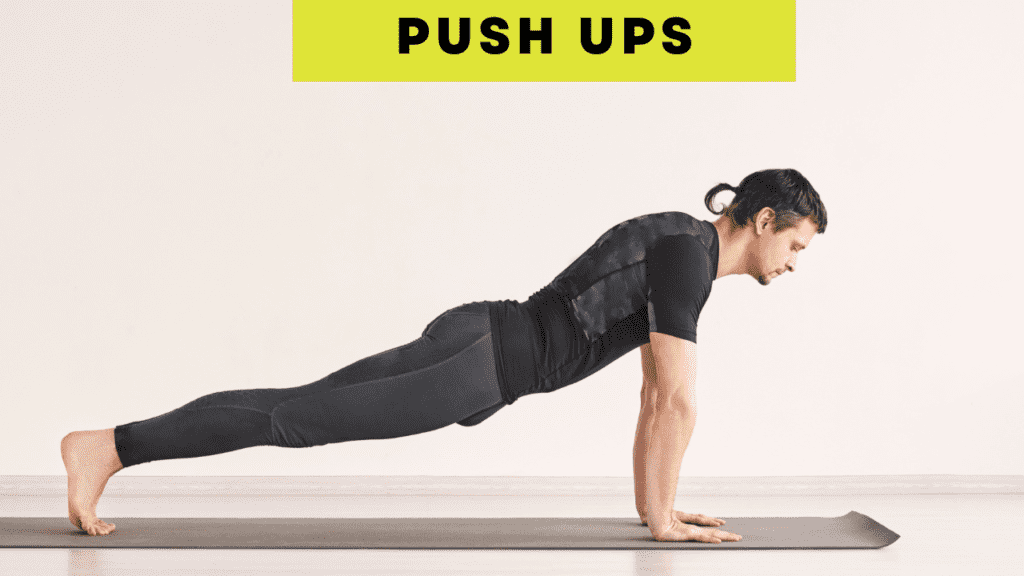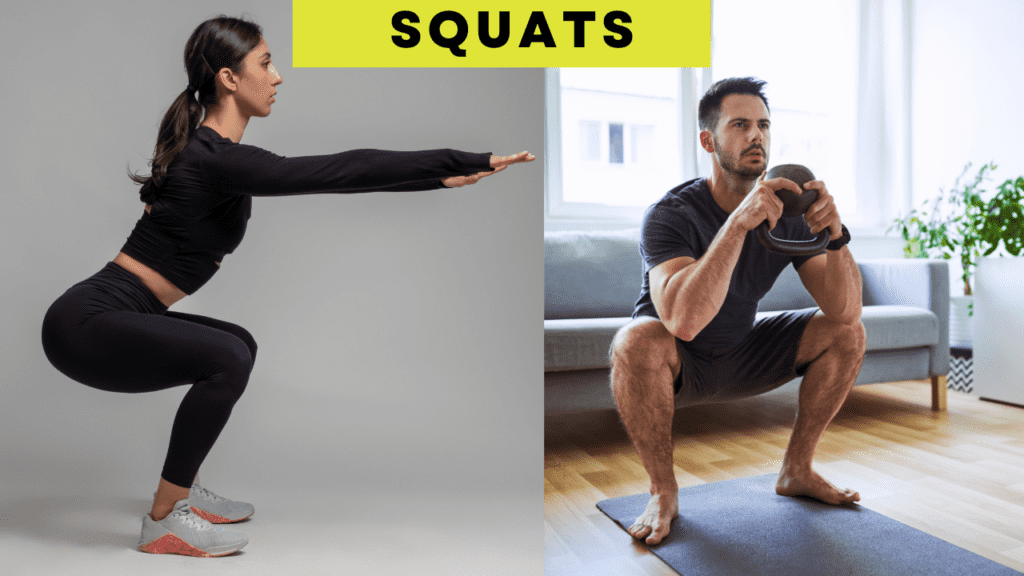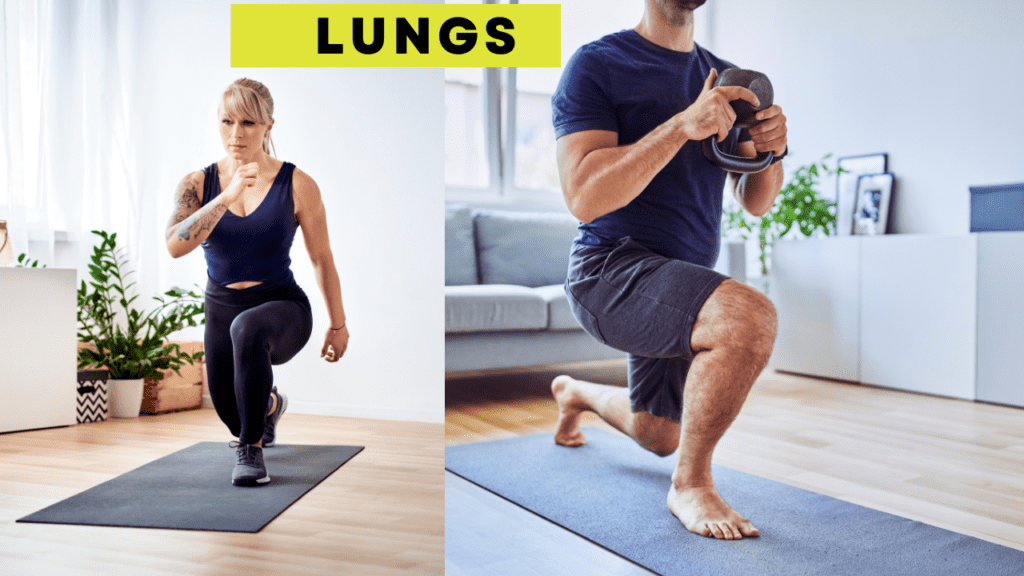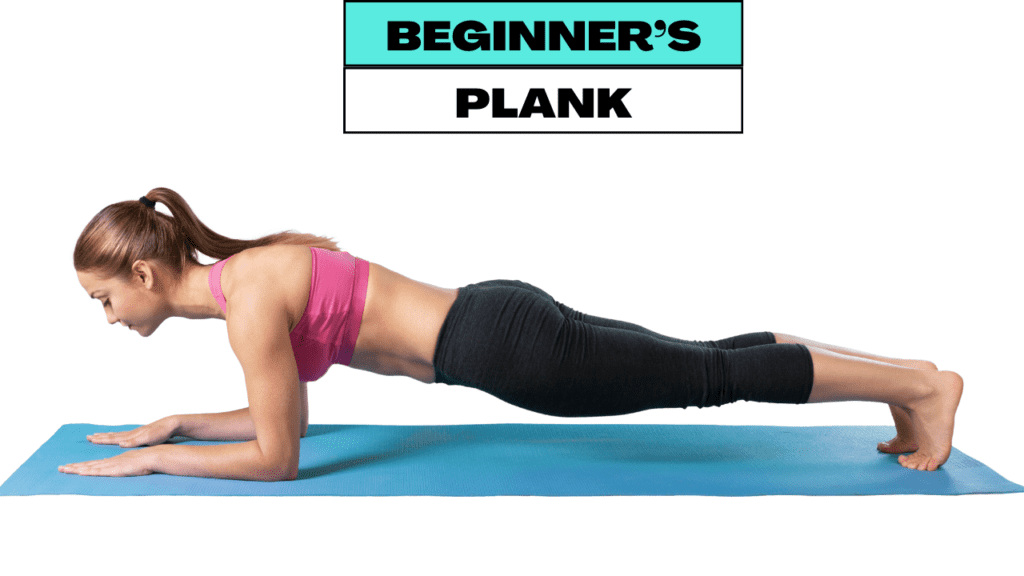It might be very much challenging to get some time off to exercise in the busy world of today. But what if I told to you that you could get healthy with out ever stepping into a gym? This new normal has redefined workouts by making at home workouts popular for everyone including the first timers. It is not necessary to hit the gym to begin your fitness training, this guide can help you no matter the reason you prefer staying indoors, due to busy schedule or small pocket.
Table of Contents
Why Home Workouts Are a Game-Changer
Having been a mainstay in fitness routines for years, home workouts are much more than a fleeting fad. They provide a unique kind of freedom because you can exercise whenever you want. These are the things that have faded away playing machines or blushing in the middle of the gym. Also, you will no longer need to pay for memberships and commute to the gym or exercise studio. Just think of converting your living room into a personal workout space where you are the boss.
Setting Up Your Home Gym
Choosing the Right Space for Home workout
Choosing the right spot is a great start to ensure efficient at home training sessions. It can be a corner in your living room, bedroom, or backyard; size is not a necessity here. I recommend ensuring that the environment has no diversions, good airflow, and enough space for an individual to move around. There is truth in the saying that your space is your main space, and organising it helps one to concentrate.
Essential Equipment for beginner’s Home workout
Many assume that they require many pieces of equipment to set up a proper home gym, but that is not true. For body weight exercises you don’t need any equipment, it is basically you and the music. But if you can spend a few extra dollars on some cheaper but valuable equipment, your workouts will improve.
Bodyweight Exercises: Body weight exercises such as push-ups, squats, lunges, and planking are exercises that do not require equipment. These work on many groups of muscles and help to build up tone without the use of weights.
Resistance Bands: These useful pieces of equipment can easily be integrated into your training regiments to help incorporate resistance into your workouts. These are cheaper, easily movable, and ideal for various workouts The effectiveness of the resistance band is awesome, you can do many exercises using this resistance band in a few budget-friendly tools can enhance your workouts.
Dumbbells: Even a basic bar of weights can be increased to help make your workout more effective. Begin with the exercise with a weight that will be slightly hard on you, but is not a danger to your posture.
Keeping Your Space Organized
Keep your training habit going strong with an organized workspace. Yoga mats can be used to define your workout zone, so store your equipment in a designated space and minimize outside distractions. You will feel more purposeful and productive during your workouts as a result.
Understanding Your Fitness Goals
Importance Of Goals When Making Future Plans
Before you begin your exercise program, it is necessary to set a number of objectives. This will help you remain focused along with motivated and is very helpful irrespective of your goals, which are overall health improvement, gain in muscles or to reduce weight.
Long term goal and short term goals
Divide your fitness objectives into two categories: immediate and long-term. The short-term goals are less complicated and can serve as motivation, for example, exercising three times per week. Outcome goals, such as completing a marathon or losing 20 pounds, provide you with goals to strive for in the future.
Tracking Your Progress
You must keep track of your improvement to avoid losing motivation along the way. To keep yourself in check during your workouts, take photos during workouts, or use fitness apps or a workout journal. Always remember to count your successes—it doesn’t matter how small they are—they are working towards that ultimate goal of yours.
Warm-Up: The Foundation of Home Workout’s
Why Warming Up Is Crucial
Just as it is not a smart idea to start the car in the freezing winter without letting it warm up first, it is also wise not to immediately start a work out. A proper warm-up puts your internal motor and metabolic systems into gear, elevates your heart rate, and reduces your risk of injury during an activity.
Simple Warm-Up Routines
- Dynamic Stretches: These are active movements that stretch your muscles and prepare them for exercise. Hip rotation, leg swings, and arm rotation are a few examples
- Cardiovascular Warm-Ups: Light cardio, such as jogging in place or jumping jacks, gets your blood flowing and your body ready for more intense activity.
Beginner’s Bodyweight Exercises: Mastering the Basics
Push-Ups

Push-ups are a best and effective exercise that targets your chest, shoulders, and triceps. Start with a basic push-up and progress to more challenging variations as you gain strength.
- Variations for All Levels: Modify your push-ups by starting on your knees or against a wall. For more advanced variations, try diamond push-ups or decline push-ups.
- Common Mistakes: Avoid flaring your elbows out too wide or letting your hips sag. Keep your head and heals in a straight line.
Squats

One of the best exercises for working your entire lower body, including your hamstrings, glutes, and quadriceps, is the squat.
- Perfecting Your Form: Keep your feet shoulder-width apart, chest up, and lower your body as if sitting back into a chair. Your knees should stay aligned with your toes.
- Adding Intensity: Once you’re comfortable with basic squats, add jump squats to increase the challenge and get your heart rate up.
Lunges

Lunges are excellent for building lower body strength and improving balance.
- Forward, Reverse, and Side Lunges: Incorporate different lunge variations to target various muscle groups. Forward lunges focus on your quads, while reverse lunges emphasize your glutes.
- How Lunges Target Multiple Muscle Groups: Lunges engage your core, glutes, quads, and hamstrings, making them a comprehensive lower-body workout.
Planks

One of the best workouts for improving your core is the plank. They may look simple, but holding a plank can be incredibly challenging.
- Building Core Strength: Start with a basic plank, holding the position for as long as you can while maintaining proper form. From head to heals your body should be in a straight line.
- Variations: Spice up your plank routine with side planks, forearm planks, or plank jacks.
Cardio Workouts You Can Do at Home
High-Intensity Interval Training (HIIT)
Popular aerobic workout known as high-intensity interval training (HIIT) alternates short intervals of high-intensity training with rest intervals. It works well to increase cardiovascular fitness and burn calories.
- Benefits of HIIT: HIIT workouts are time-efficient, can be done anywhere, and are great for weight loss and building stamina.
- Sample HIIT Routines: A simple HIIT workout might include 30 seconds of burpees, 30 seconds of rest, 30 seconds of high knees, and so on for about 15-20 minutes.
Low-Impact Cardio
Not all cardio has to be high-impact. Low-impact exercises are gentler on your joints while still providing a good workout.
- Examples: Jumping rope, jogging in place, and step workouts are excellent low-impact cardio exercises.
- Combining Cardio with Strength Training: For a well-rounded routine, alternate between cardio and strength exercises to keep your workouts balanced.
Building Muscle at Home with Strength Training Without Weights
The Science of Strength Training
The goal of strength training is to use resistance to force your muscles to grow. Weights aren’t always necessary for this; your body weight may be plenty.
Creative Ways to Use Household Items
To get muscle, you do not require expensive equipment. Home goods can make great replacements for exercise equipment. Some of these are enough
- Water Bottles and Cans: Use water bottles or cans as dumbbells for bicep curls, shoulder presses, and other exercises.
- Chairs: Chairs can be used for tricep dips or step-ups.
- Backpacks: Fill a backpack with books to create a makeshift weight for squats or lunges.
Advanced Techniques
As you grow, use more complex methods such as progressive overload, which involves progressively increasing the resistance or intensity of your workouts.
- Supersets and Circuits: Combine exercises back-to-back with minimal rest to keep your muscles engaged and your heart rate up.
Flexibility and Mobility: The Often-Overlooked Components
Importance of Flexibility for Overall Fitness
Flexibility is key to overall fitness and helps prevent injuries. Incorporating flexibility exercises into your routine can improve your performance and recovery.
Basic Stretching Exercises
Stretching should target all major muscle groups, especially those you’ve worked during your workout.
- When to Stretch: Incorporate stretching both before and after your workout. Pre-workout stretching should be dynamic, while post-workout stretching can be more static.
Yoga for Flexibility and Mental Well-being
Yoga is a stupendous way to improve flexibility while also promoting mental well-being. It’s a holistic approach to fitness that benefits both the body and mind.
- Beginner-Friendly Yoga Poses: Start with simple poses like Downward Dog, Child’s Pose, and Cobra. These poses stretch your muscles and improve your flexibility.
Designing Your Personalized Home Workout Plan
Combining Cardio, Strength, and Flexibility
Include components of cardio, strength training, and flexibility exercises in your fitness regimen for a well-rounded workout. This guarantees that you are getting fitter in every aspect.
Frequency and Duration
How frequently should you exercise? As you gain endurance, progressively increase the frequency of your workouts. For newbies, try to get in at least three sessions a week. A session should last between thirty and sixty minutes, depending on your goals and degree of fitness..
Adapting Your Plan as You Progress
As you gain strength and endurance, it’s important to adapt your workout plan. Increase the intensity of your exercises, add new movements, or try different workout styles to keep your routine challenging and engaging.
Staying Motivated: Tips for Consistency
Creating a Workout Schedule
One of the best ways to stay consistent is by creating a workout schedule. Treat your workouts like any other important appointment—block out time on your calendar and stick to it.
Tracking Progress with Apps and Journals
You can keep track of your workouts, track your progress, and maintain motivation with the aid of a variety of apps and notebooks. It can be immensely inspiring to see your progress over time.
Finding an Accountability Partner
Working out with a friend, even virtually, can keep you accountable and make your workouts more enjoyable. An accountability partner can also provide encouragement on days when your motivation is low.
Nutrition and Hydration: Fueling Your Workouts
The Basics of a Balanced Diet
It’s essential to eat a balanced diet to support your training and speed up recuperation. Ensure your diet includes a healthy mix of macronutrients: carbohydrates, proteins, and fats.
Pre- and Post-Workout Nutrition
What you eat before and after your workouts can impact your performance and recovery. Before your workout, focus on carbs for energy. Afterward, prioritize protein to aid muscle recovery.
Importance of Staying Hydrated
Staying hydrated is essential for optimal performance. Aim to drink water throughout the day, not just during your workouts. The amount you need can vary based on your activity level and the climate you live in.
Overcoming Common Challenges
Dealing with Plateaus
It is hard not to experience this problem of progression sticking while on any fitness regimen. If for some reason you have been a little stagnant with the workouts, then maybe switch it up a little more, try some intervals or maybe even take a rest day.
Avoiding Injuries
Preventing accidents is very important especially if you wish to achieve your fitness goals. Ways to properly warm up before exercising include stretching, observing proper form and paying attention to signals that your body may be sending. If it doesn’t seem correct, don’t proceed ahead until you have time to consider the situation more carefully.
Ignore These 5 Key Aspects of Your Freelance Business at Your Peril
It is a fairly common understanding that any fitness training process will sustain certain setbacks. Regardless of if you had a specific week planned or something always seems to pop up, do not let this freeze your progress. Stay on task, and the fact is that what you can do, day in and day out, are the critical factors that make the difference.
Conclusion
Starting a fitness journey from home is entirely doable, and this blog sets you up with everything you need for it. There is all the information one has ever needed to compile a good, balanced, and effective fitness program, starting from body weight exercises and ending with nutrition recommendations. You will remember that self-compassion is imperative, as well as consistency. Just go step by step: everyone’s fitness journey is personal.
FAQs
Can I Build Muscle with Just Bodyweight Exercises?
off course, you can build muscle with just bodyweight exercises. Exercises like push-ups, pull-ups, squats, and lunges effectively target different muscle groups. The key is to progressively overload your muscles by increasing the intensity of your workouts. This can be done by adding more reps, sets, or advanced variations of exercises. Consistency and proper form are crucial to see muscle gains with bodyweight training.
How Long Should My Home Workouts Be?
The duration of your at-home workouts can vary based on your fitness level and goals. Most people find that a 30- to 60-minute workout is useful. Prioritize quality above quantity, making sure that every exercise is done correctly in terms of form and intensity. Even a 15–20 minute high-intensity workout can be helpful if you’re pressed for time.
What If I Don’t Have Any Equipment?
No equipment? No problem! Bodyweight exercises can provide a full-body workout without any equipment. Focus on exercises like push-ups, squats, lunges, planks, and burpees. You can also use household items, like chairs for tricep dips or stairs for step-ups, to add variety. The key is to keep challenging your body with different movements and increasing the difficulty as you progress.
How Do I Stay Motivated to Work Out at Home?
Staying motivated to work out at home can be challenging, but setting clear goals and creating a routine helps. Find a workout plan that excites you, and track your progress to see how far you’ve come. Make your workout space inviting, play your favorite music, and consider following online workout classes or videos to keep things fresh. Additionally, setting specific workout times and treating them like an appointment can help you stay consistent.
Is It Okay to Work Out Every Day?
Working out every day can be okay if you listen to your body and vary the intensity of your workouts. Incorporating rest days or active recovery days is essential to allow your muscles to repair and grow. Overtraining can lead to burnout and injury, so it’s crucial to balance your routine with both high-intensity workouts and lighter, restorative exercises like stretching or yoga. A general guideline is to aim for at least one or two rest days per week.


yeah that’s enough for those who are beginner’s and busy persons